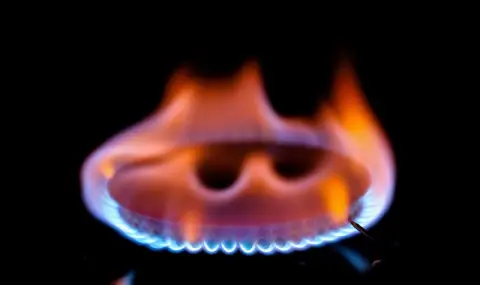Gas stoves and stoves have many advantages . But scientists say they can be dangerous to health. Here's why:
Anyone who cooks with gas enjoys the advantages - direct fire, temperature and flame, which are easily regulated. There is no need for special dishes as with induction hobs, and cooking with gas is cheaper than with electricity.
However, gas stoves are constantly debated. For example, they are now expected to be banned in most new buildings in New York from 2026 onwards. The main goal is to limit greenhouse gases. In addition, however, gas stoves also create health risks, researchers from Stanford University write in the journal Science Advances.
"A problem for the whole family"
In this publication, scientists are mostly concerned with the negative effects of nitrogen dioxide. It is released in large quantities as a by-product of combustion processes, for example in industrial plants, power plants and heating systems. However, the main source is car traffic.
Nitrogen dioxide is also released during gas cooking, and air pollution with it is far from limited to the kitchen, researchers warn. "I did not expect that the level of pollutants in the bedroom would exceed health recommendations an hour after using the gas stove and would remain high for several hours," said Rob Jackson, a professor at Stanford. He is one of the authors of the study. "Exposure to these fumes is not just a problem for cooks, but for the whole family," he says.
What are the health risks of nitrogen dioxide
Nitrogen dioxide is a toxic oxidizing irritant gas that can damage the mucous membranes throughout the respiratory tract, especially in the bronchi and alveoli. This can lead to shortness of breath, coughing or bronchitis. Among the consequences of taking nitrogen dioxide are increased susceptibility to respiratory infections or reduced lung function.
People with respiratory diseases such as asthma and chronic bronchitis, people with heart problems and children who have delayed development of lung function are considered risk groups for exposure to nitrogen dioxide.
The authors of the study also warn about this - they estimate that the mix of gases that are released during gas and propane cooking have caused up to 200,000 cases of asthma in children in the United States. According to the scientists, a quarter of these cases may be due to the harm from nitrogen dioxide. They also estimate that 19,000 deaths a year are due to long-term exposure to nitrogen dioxide in the home.
However, the scientists emphasize that these are only averages, as they do not take into account long-term exposure to extremely high levels of nitrogen dioxide for a short time, such as the situation with gas stoves in the home. In addition, the calculations are based on previous research into the effect of nitrogen dioxide in open spaces where there is also pollution from vehicles and power plants.
What is the role of gas stoves for health
Scientists from Stanford University have already published several studies on the harm of using gas stoves. Previous research looked at the release of methane and carcinogenic benzene. The latest study is just another piece of the puzzle that will help establish the overall effect of gas stoves on human health.
This time, the researchers are focusing on how the harmful gases spread, how they accumulate and when they eventually dissipate in the home. Of course, the size of each home is also very important.
The results also confirm that food emits no or very little nitrogen dioxide while cooking, and that electric ovens and hotplates do not emit nitrogen dioxide. "The problem is the fuel, not the food," explains Jackson. "Electric stoves emit neither nitrogen dioxide nor benzene."
The US Federal Environmental Agency writes that "cooking and baking with gas stoves [...] in the home can lead to short-term high levels of nitrogen dioxide, which quickly decrease with room ventilation". The agency's conclusion is that when installing a gas cooker, aspiration with an exhaust duct to the outside can be taken into account in the planning.
Stanford researchers also recommend using an aspirating filter as well as regular ventilation to reduce the level of pollutants.
